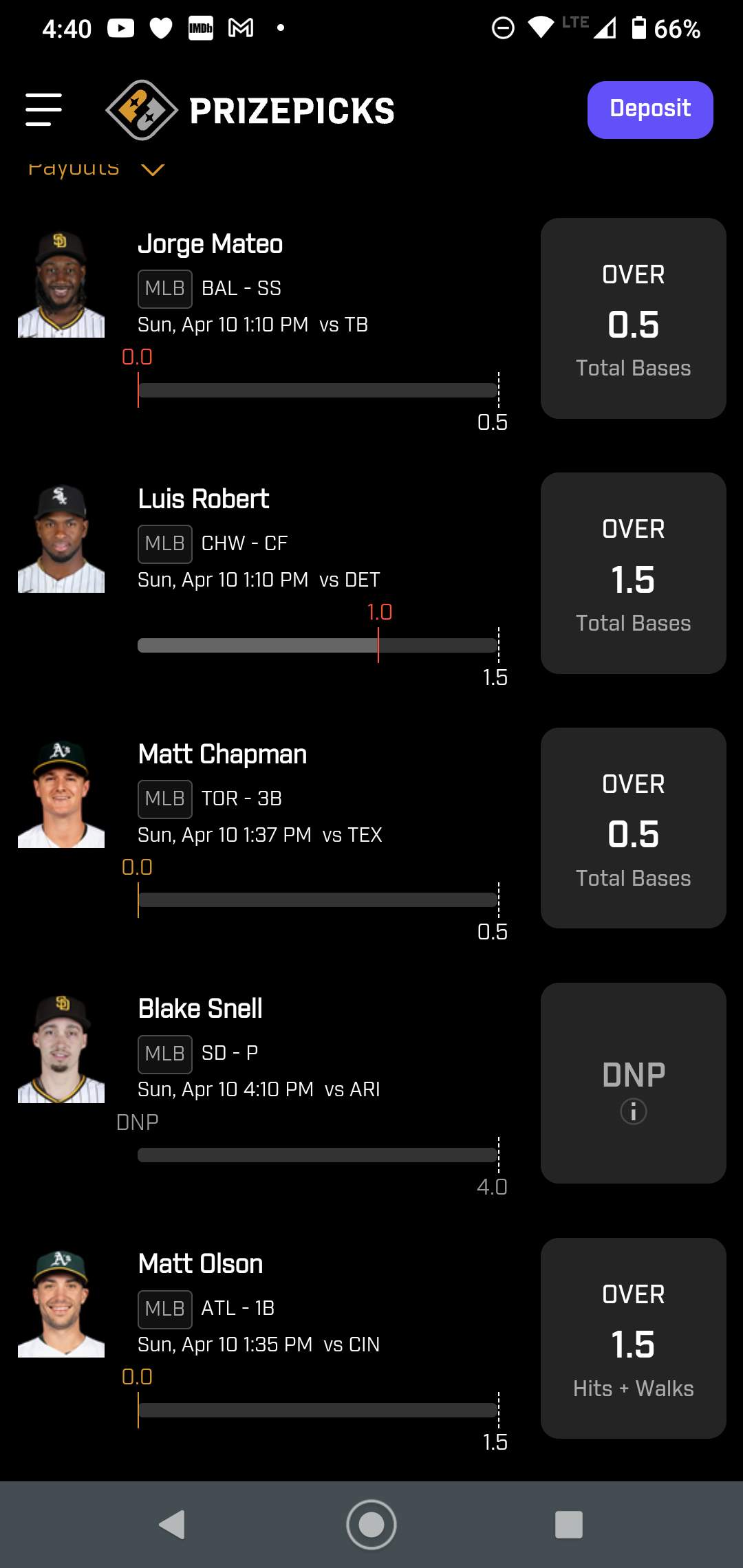Total bases in baseball measure a player’s offensive performance. Each base reached counts towards this total.
Baseball is a game of numbers, and understanding these numbers can enhance your appreciation for the sport. Total bases is a key statistic that helps evaluate a player’s hitting ability. It represents the number of bases a player earns from hits.
A single counts as one base, a double as two, a triple as three, and a home run as four. Tracking total bases can provide insights into a player’s power and consistency at the plate. Knowing this stat can deepen your understanding of player contributions and team strategies. Stay tuned as we delve deeper into the significance of total bases in baseball.
Introduction To Total Bases
Baseball statistics can be complex. One key metric is Total Bases. It helps gauge a player’s performance. Understanding Total Bases is essential for fans and analysts.
Definition
Total Bases measures the number of bases a batter earns. They are awarded for hits. Here’s a quick breakdown:
- Single – 1 Base
- Double – 2 Bases
- Triple – 3 Bases
- Home Run – 4 Bases
Each hit type adds to the player’s total bases. For example, if a player hits a double and a home run, they get six total bases.
Importance In Baseball
Total Bases are crucial for evaluating hitters. They show how well a player hits for power. A player with a high total base count is often a strong hitter.
Teams use Total Bases to assess player value. Coaches use it to build strategies. It helps in forming batting orders and game plans.
Fans also follow this metric. It adds depth to the game experience. Knowing Total Bases makes watching baseball more enjoyable.
Below is a table summarizing the Total Bases per hit:
| Hit Type | Total Bases |
|---|---|
| Single | 1 |
| Double | 2 |
| Triple | 3 |
| Home Run | 4 |
Understanding Total Bases can enrich your knowledge of baseball. It’s a simple yet powerful metric.

Credit: www.mlb.com
Calculating Total Bases
Total bases is a key statistic in baseball. It helps measure a player’s hitting performance. Calculating total bases is straightforward. Each type of hit contributes differently. Understanding how to calculate it can give you a deeper appreciation of the game.
Single
A single is the most basic hit. It allows the batter to reach first base. In total bases, a single counts as one base. Each time a player hits a single, they add one to their total base count.
Double
A double is a hit that lets the batter reach second base. It is more valuable than a single. In terms of total bases, a double counts as two bases. This means a player adds two to their total base count for each double.
Triple
A triple is a rarer and more exciting hit. It allows the batter to reach third base. In total bases, a triple counts as three bases. Players add three to their total base count for each triple they hit.
Home Run
A home run is the most valuable hit. It lets the batter round all the bases and score. In total bases, a home run counts as four bases. Each home run adds four to a player’s total base count.
Total Bases Vs. Other Statistics
Understanding total bases is vital for baseball fans and players. It gives a clear picture of a player’s offensive contribution. Total bases measure the number of bases a player earns through hits. Comparing total bases with other statistics can offer deeper insights.
Total Bases Vs. Hits
Hits count how many times a player reaches first base safely. Total bases go further. They measure the total number of bases a player gains. For example, a double counts as two total bases. A home run counts as four total bases. Hits alone do not show the full picture. Total bases give more detail about a player’s performance.
Total Bases Vs. Rbis
RBIs, or Runs Batted In, measure how many runs a player drives in. Total bases and RBIs are different. Total bases focus on the player’s hits. RBIs focus on the runs a player helps score. A player can have high total bases but low RBIs. This can happen if they play on a team with few base runners. Both stats are important. Together, they offer a fuller view of a player’s offensive impact.
Total Bases Vs. Slugging Percentage
Slugging percentage shows the power of a hitter. It calculates total bases per at-bat. Total bases and slugging percentage are closely linked. High total bases usually mean a high slugging percentage. But slugging percentage also accounts for at-bats. This makes it a rate stat. Total bases is a counting stat. Both stats are useful. They help evaluate a player’s power and consistency.
Historical Context
Baseball statistics have evolved over time. “Total bases” is one such stat. It measures a player’s offensive success. It adds depth to understanding the game. This stat has been tracked for many years. Its history is rich and interesting.
Evolution Of The Statistic
The concept of total bases began in the early 20th century. Baseball historians trace its origins to the need for better player evaluation. The stat counts all bases a player reaches from hits. A single counts as one base. A double counts as two. A triple counts as three. A home run counts as four. This method provided a clearer view of a player’s contribution. Over time, it became a standard metric.
Notable Record Holders
Some players have excelled in accumulating total bases. Hank Aaron is one of the top record holders. He accumulated 6,856 total bases in his career. Another standout is Barry Bonds. He achieved 5,976 total bases. These players’ records highlight their offensive power. They are legends in baseball history. Their achievements are celebrated by fans and historians alike.
Impact On Player Evaluation
Understanding total bases in baseball is crucial for player evaluation. Total bases measure a hitter’s offensive production by counting all bases gained from hits. This metric helps scouts and analysts assess a player’s value and potential.
Scouting Prospects
Scouts use total bases to evaluate young players. A high total bases number indicates strong hitting skills. Scouts look for players who consistently earn bases. This can predict future success in professional leagues.
Scouting reports often highlight total bases. It provides a clear picture of a player’s offensive abilities. Scouts can compare prospects based on their total bases performance. This helps in making informed decisions during drafts.
Comparing Players
Total bases allow for easy comparison between players. It shows how productive a player is offensively. Comparing total bases can reveal who contributes more to their team.
Coaches and managers use total bases to create effective lineups. Players with higher total bases often bat in key positions. This maximizes the team’s scoring opportunities.
Total bases also help fans understand player performance. It’s a straightforward way to gauge a player’s impact on the game. Fans can see who excels in hitting and driving runs.

Credit: baseballcentric.com
Total Bases In Strategy
Total bases measure a batter’s overall effectiveness. They count all bases a player earns from hits. Single, double, triple, and home run each add to this total. This statistic helps teams form their game plans. It affects both offensive and defensive strategies.
Offensive Strategy
Coaches use total bases to evaluate a player’s hitting impact. High total bases indicate a strong hitter. These players often bat in key lineup spots. They aim to maximize scoring opportunities. Strategically, they may get more chances to hit with runners on base.
Teams also consider total bases for lineup balance. They mix power hitters with consistent singles hitters. This mix keeps the offense dynamic. It ensures that runners are constantly moving.
Defensive Adjustments
Pitchers and fielders adapt based on total bases data. They identify hitters likely to earn extra bases. These hitters face more strategic pitching. Pitchers may use off-speed pitches or work the corners. They aim to limit big hits and force groundouts.
Defensive shifts also come into play. Fielders adjust positions for power hitters. They cover areas where these hitters often drive the ball. This positioning helps prevent extra-base hits. It’s a calculated effort to keep the batter’s total bases low.
Modern Analysis Tools
Modern analysis tools have transformed how fans and analysts view baseball. These tools provide deeper insights into player performance, beyond traditional stats like batting average or ERA. Understanding total bases is easier with advanced metrics and sabermetrics.
Sabermetrics
Sabermetrics is the empirical analysis of baseball through statistics. It helps measure in-game activity more precisely. Bill James popularized this approach in the 1970s. Sabermetrics covers various aspects of the game, including total bases.
Key metrics include:
- Slugging Percentage (SLG) – Measures the total number of bases a player records per at-bat.
- On-Base Plus Slugging (OPS) – Combines on-base percentage and slugging percentage to evaluate a player’s overall offensive performance.
Advanced Metrics
Advanced metrics provide further insights into baseball statistics. These metrics go beyond traditional measures and focus on specific actions in the game.
Important advanced metrics include:
- Weighted On-Base Average (wOBA) – Assigns different weights to various offensive actions, offering a more detailed picture of a player’s ability to get on base.
- Isolated Power (ISO) – Measures the raw power of a hitter by calculating extra bases per at-bat.
Combining these metrics with traditional stats like total bases offers a comprehensive view of player performance. Using modern analysis tools, fans and analysts can make better predictions and understand the game more deeply.
Case Studies
Exploring the concept of total bases in baseball can be more engaging through real-life examples. In this section, we will delve into the case studies of legendary players and recent performers who have made significant impacts in this aspect of the game.
Legendary Players
Many legendary players have left their mark on baseball with their total bases achievements. Let’s look at a few notable examples:
| Player | Total Bases | Career Span |
|---|---|---|
| Hank Aaron | 6,856 | 1954-1976 |
| Stan Musial | 6,134 | 1941-1963 |
| Willie Mays | 6,066 | 1951-1973 |
Hank Aaron is a prime example with an impressive 6,856 total bases. His consistency over 22 seasons showcases his prowess. Another great is Stan Musial, amassing 6,134 total bases, reflecting his dominance in the game. Willie Mays, with 6,066 total bases, is celebrated for his all-around excellence.
Recent Performers
Recent performers have also made significant contributions to the total bases tally. Here are a few contemporary stars:
| Player | Total Bases | Career Span |
|---|---|---|
| Albert Pujols | 5,923 | 2001-2022 |
| Adrián Beltré | 5,309 | 1998-2018 |
| Miguel Cabrera | 5,248 | 2003-Present |
Albert Pujols stands out among modern players with 5,923 total bases. His longevity and skill have been critical. Adrián Beltré also shines with 5,309 total bases, showing remarkable consistency. Miguel Cabrera, still active, has accumulated 5,248 total bases, underlining his ongoing impact on the game.

Credit: www.reddit.com
Frequently Asked Questions
What Is The Definition Of Total Bases In Baseball?
Total bases measure a player’s overall offensive production. It counts all bases from hits: singles, doubles, triples, and home runs.
How Are Total Bases Calculated?
Total bases are calculated by adding all bases a player reaches from hits. Singles count as one, doubles as two, triples as three, and home runs as four.
Why Are Total Bases Important In Baseball?
Total bases are important because they reflect a player’s hitting power and contribution to the team’s offense. They show how well a player advances runners.
Do Walks Count Towards Total Bases?
No, walks do not count towards total bases. Only bases gained from hits are included in the total bases calculation.
Conclusion
Understanding total bases is crucial in baseball. It measures a player’s hitting strength. Each base counts towards the total. Singles, doubles, triples, and home runs all add up. This statistic helps evaluate a player’s performance. It also influences team strategies.
Fans and analysts use it to understand the game better. Knowing total bases can enhance your appreciation of baseball. So, keep an eye on this stat during games. It reveals much about a player’s contribution. Thanks for reading! Keep enjoying baseball with newfound knowledge.





